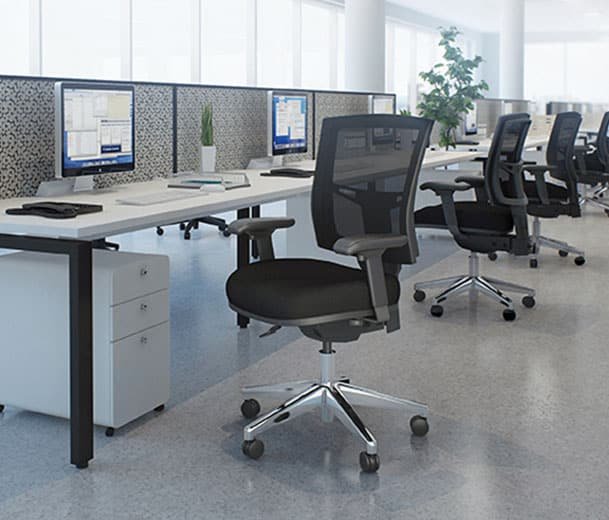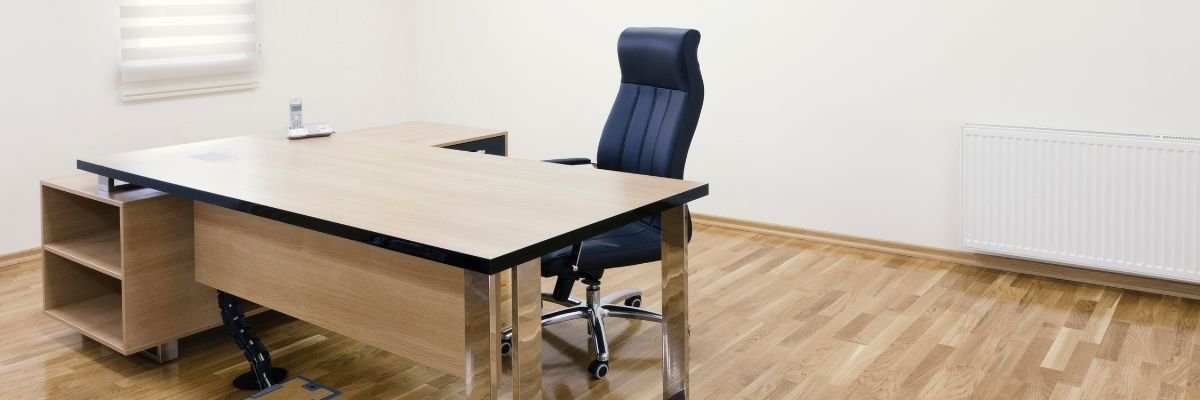Blog
Eco-Friendly Office Furniture

Table of Contents
The modern workplace is undergoing a significant transformation as businesses increasingly recognize their responsibility toward environmental sustainability. Office furniture, which represents a substantial portion of corporate environmental impact, has become a focal point for organizations seeking to reduce their carbon footprint while creating healthier, more productive work environments. The shift toward eco-friendly office furniture is not merely a trend but a necessary evolution that addresses environmental concerns, employee wellbeing, and long-term business sustainability.
Understanding Eco-Friendly Office Furniture
Eco-friendly office furniture encompasses products designed, manufactured, and disposed of with minimal environmental impact. This category includes furniture made from sustainable materials, produced using environmentally responsible processes, and designed for longevity and recyclability. The concept extends beyond the materials used to include the entire lifecycle of the furniture, from raw material extraction to end-of-life disposal or recycling.
The environmental benefits of choosing sustainable office furniture are substantial. Traditional furniture manufacturing often involves harmful chemicals, non-renewable resources, and processes that generate significant waste and emissions. In contrast, eco-friendly alternatives utilize renewable materials, non-toxic finishes, and manufacturing processes that minimize waste and energy consumption. This approach not only reduces environmental impact but also creates healthier indoor environments for employees.
Materials and Manufacturing Processes
Sustainable Wood Options
Wood remains one of the most popular materials for office furniture, but not all wood is created equal from an environmental perspective. Sustainable wood options include bamboo, which grows rapidly and regenerates quickly, making it an excellent renewable resource. Reclaimed wood, sourced from old buildings, barns, or previously used furniture, provides unique character while preventing waste. Certified sustainable hardwoods, bearing certifications from organizations like the Forest Stewardship Council (FSC) or Programme for the Endorsement of Forest Certification (PEFC), ensure responsible forest management practices.
The manufacturing process for eco-friendly wood furniture typically involves water-based finishes and adhesives that emit fewer volatile organic compounds (VOCs) than traditional alternatives. These processes create furniture that is not only environmentally responsible but also safer for indoor air quality.
Recycled and Upcycled Materials
The circular economy principle drives the use of recycled and upcycled materials in office furniture. Recycled metals, particularly aluminum and steel, offer durability and can be recycled indefinitely without losing their properties. Recycled plastics, often sourced from post-consumer waste like bottles and containers, can be transformed into durable desk surfaces, chair components, and storage solutions.
Upcycling takes this concept further by transforming waste materials into products of higher value. This might involve converting old shipping containers into office modules or transforming discarded materials into unique furniture pieces that serve both functional and aesthetic purposes.
Alternative Eco-Friendly Materials
Innovation in sustainable materials has led to exciting alternatives for office furniture. Cork, harvested from cork oak trees without harming the tree, provides natural antimicrobial properties and excellent insulation. Mycelium, the root structure of mushrooms, can be grown into leather-like materials for upholstery. Bio-based plastics, derived from plant materials rather than petroleum, offer traditional plastic functionality with reduced environmental impact.
Health Benefits for Employees
The connection between eco-friendly office furniture and employee health is increasingly recognized as a crucial factor in workplace design. Traditional office furniture often contains formaldehyde, flame retardants, and other chemicals that can off-gas into the workplace environment, contributing to poor indoor air quality and potential health issues.
Improved Indoor Air Quality
Eco-friendly furniture typically uses low-VOC or VOC-free finishes and adhesives, significantly improving indoor air quality. This reduction in chemical emissions can decrease headaches, eye irritation, and respiratory issues that employees might experience in poorly ventilated spaces with traditional furniture. Natural materials like solid wood and bamboo also help regulate humidity levels, creating a more comfortable working environment.
Ergonomic Design and Natural Materials

Many eco-friendly furniture manufacturers prioritize ergonomic design, recognizing that sustainable practices should extend to human comfort and health. Natural materials often provide better tactile experiences and temperature regulation compared to synthetic alternatives. For example, wooden desk surfaces remain more comfortable to touch throughout the day compared to plastic laminates that can become uncomfortably warm or cold.
Environmental Impact and Sustainability
The environmental impact of office furniture extends far beyond the immediate workspace. Traditional furniture manufacturing contributes significantly to deforestation, water pollution, and greenhouse gas emissions. The furniture industry is also responsible for substantial waste generation, with many pieces ending up in landfills at the end of their useful life.
Carbon Footprint Reduction
Eco-friendly office furniture typically has a lower carbon footprint throughout its lifecycle. Sustainable materials often require less energy to produce, and local sourcing reduces transportation emissions. Manufacturing processes for eco-friendly furniture generally consume less energy and water while producing fewer emissions. Additionally, the durability of well-made sustainable furniture means fewer replacements over time, further reducing the total environmental impact.
Waste Reduction and Circular Economy
The circular economy model, which emphasizes keeping materials in use for as long as possible, is fundamental to eco-friendly office furniture. This approach includes designing furniture for disassembly and repair, using recyclable materials, and creating take-back programs where manufacturers reclaim furniture at the end of its useful life. Some companies have developed modular furniture systems that can be reconfigured and updated rather than replaced, extending the furniture’s useful life and reducing waste.
Cost Considerations and ROI
While eco-friendly office furniture often requires a higher initial investment, the long-term return on investment can be substantial. The durability of sustainable furniture means lower replacement costs over time. Additionally, many eco-friendly furniture pieces are designed for modularity and adaptability, allowing organizations to reconfigure spaces without purchasing entirely new furniture.
Long-term Financial Benefits
The total cost of ownership for eco-friendly furniture is often lower than traditional alternatives when considering factors like durability, maintenance requirements, and replacement frequency. High-quality sustainable furniture can last decades with proper care, while cheaper traditional furniture might need replacement every few years. This longevity translates to significant savings over time.
Productivity and Employee Satisfaction
Healthier work environments created by eco-friendly furniture can lead to improved employee productivity and satisfaction. Reduced sick days, lower turnover rates, and increased employee engagement can provide substantial financial benefits that offset the initial investment in sustainable furniture. Studies have shown that employees in environmentally conscious workplaces report higher job satisfaction and are more likely to remain with their employers.
Choosing the Right Eco-Friendly Office Furniture
Selecting appropriate eco-friendly office furniture requires careful consideration of various factors beyond environmental impact. Functionality, aesthetics, and durability must all be balanced with sustainability goals to create an effective workspace.
Certifications and Standards
Understanding certifications and standards is crucial when selecting eco-friendly office furniture. Look for certifications such as GREENGUARD, which ensures low chemical emissions, or Cradle to Cradle, which evaluates the entire product lifecycle. Forest Stewardship Council (FSC) certification indicates responsibly sourced wood, while ENERGY STAR certification applies to powered furniture components.
Assessing Your Needs
Before purchasing, conduct a thorough assessment of your office needs. Consider factors like the number of employees, work styles, space constraints, and future growth plans. This assessment helps ensure that your eco-friendly furniture investment aligns with both sustainability goals and practical requirements.
Quality and Durability
Prioritize quality and durability when selecting eco-friendly furniture. Well-made sustainable furniture not only lasts longer but also maintains its appearance and functionality over time. Look for solid construction, quality hardware, and warranties that reflect the manufacturer’s confidence in their product’s longevity.
Implementation Strategies
Successfully implementing eco-friendly office furniture requires a strategic approach that considers both immediate needs and long-term goals. Organizations should develop a comprehensive plan that addresses current furniture requirements while establishing guidelines for future purchases.
Phased Implementation
For organizations with existing furniture, a phased approach to implementing eco-friendly alternatives can be more manageable financially and operationally. Start with high-impact areas or pieces that need immediate replacement, then gradually transition other furniture as budgets allow and existing pieces reach the end of their useful life.
Employee Education and Engagement
Educating employees about the benefits of eco-friendly furniture and involving them in the selection process can increase buy-in and satisfaction. Consider forming a sustainability committee that includes employee representatives to help guide furniture decisions and promote environmental consciousness throughout the organization.
Maintenance and Care
Proper maintenance extends the life of eco-friendly furniture and maximizes its environmental benefits. Develop maintenance protocols that use environmentally friendly cleaning products and procedures. Regular care not only preserves the furniture’s appearance but also maintains its functionality and safety.
Future Trends and Innovations
The eco-friendly office furniture industry continues to evolve, with new materials, technologies, and design approaches emerging regularly. Staying informed about these trends can help organizations make forward-thinking decisions that align with future sustainability goals.
Technological Integration
Smart furniture that integrates technology for monitoring usage, adjusting ergonomics, or managing energy consumption represents an emerging trend. These innovations can provide valuable data about how furniture is used while maintaining environmental responsibility.
Biophilic Design
The integration of natural elements into furniture design, known as biophilic design, is gaining popularity. This approach might include living walls integrated into office systems, furniture that incorporates natural textures and materials, or designs that bring outdoor elements indoors.
Modular and Adaptable Systems
Future office furniture increasingly emphasizes modularity and adaptability. These systems allow organizations to reconfigure spaces quickly and efficiently without purchasing new furniture, supporting both sustainability goals and changing work patterns.
Conclusion
The transition to eco-friendly office furniture represents a crucial step toward creating sustainable, healthy, and productive workspaces. While the initial investment may be higher, the long-term benefits including reduced environmental impact, improved employee health, and lower total cost of ownership make sustainable furniture an intelligent choice for forward-thinking organizations.
The key to success lies in understanding that eco-friendly furniture is not just about environmental responsibility but about creating better workplaces that support both human and planetary health. By carefully selecting certified sustainable materials, prioritizing durability and quality, and implementing strategic purchasing decisions, organizations can create office environments that reflect their values while providing practical, beautiful, and healthy spaces for their employees.
As the market for eco-friendly office furniture continues to grow and innovate, organizations that embrace these solutions today will be better positioned for the sustainable future of work. The investment in eco-friendly office furniture is ultimately an investment in the health of employees, the environment, and the long-term success of the organization itself.
